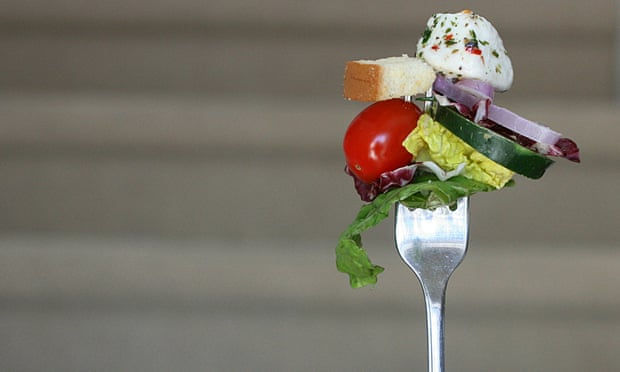The fork
- rosemarydearman1
- Feb 10, 2020
- 6 min read
Peas are the big test for forks." Guy Browning - The Guardian

Before I finally put Robert Carrier back on the shelf I am turning to the subject of the fork because of the quote that heads his section on kitchen equipment.
"When Catherine de Medici brought Italian cooks to France, she also brought the key to the whole future of eating in one kitchen gadget - the fork. The knife, I grant you, is pretty important, and so is the spoon. A knife alone, however meant that you still had to use your hands for a good part of the meal and that restricted you to roasts and boiled meats and all the rigmarole of medieval food. But with the introduction of the fork, sauces and every subtlety became possible and the art of present-day cookery was born." Robert Carrier
It wasn't particularly because of the bit of information about Catherine de Medici - I sort of knew that already, and probably you do too, but it was more his comment that a fork meant that one could now eat 'sloppy' food, for want of a better word. And thus a simple implement ultimately changed the way that people prepared food.
That was my starting point, but as usual I have gone in a few different directions.
So first of all is it true? I mean is it true that Catherine de Medici is responsible for the fork as we know it today? Well yes and no. According to Wikipedia and also to a somewhat lengthy article by Sara Goldsmith in Slate called The rise of the fork, (and a whole lot of other articles that I found), the fork has been around since very ancient times - China, Egypt, Rome, Greece, Persia - you name it - they all had the fork. However, I think that primarily it was then used as a cooking utensil - for example to fish a chunk of meat out of a pot of boiling liquid.

Most of the articles I read seemed to imply that the Persians in the 8th or 9th century can be held responsible for using a fork as an eating implement - though I don't think you would have been able to eat peas with these, although maybe you could manage by spearing them.
From Persia, as it was then, it travelled to Byzantium and eventually two Byzantine princesses with unpronounceable and unwritable names married into Italy and took the fork with them. Women again! So the Italians did indeed have the fork - I think this is just a bit before Catherine de Medici.
And here's a bit about Catherine de Medici.
Said not to be very beautiful, even mildly ugly, she nevertheless was probably the most powerful woman in Europe in the sixteenth century. (What about Elizabeth and Isabella of Spain? - though maybe slightly different times.) She was very young - just 14 - when she married Henri II of France in 1533. He was the same age, but already besotted with the somewhat older and reputedly beautiful Diane de Poitiers whole he continued to love all of his life. This did not stop Henri and Catherine eventually having ten children however, three of whom became kings of France, and, because of their tender years, under the influence of their mother Catherine. Basically she ruled France during the kingship of the first two and was very influential with the third. Amongst other things she is said to be responsible for the St. Bartholomew's Day massacres of the Huguenots, which also changed the face of Europe as the French Huguenots fled elsewhere. Final piece of information - she was the granddaughter of Lorenzo the Great - the Medici we all know about.
But back to the fork. We now have the fork firmly ensconced in France from where it travelled to Spain. Only for the aristocrats and the wealthy of course, who had little boxes in which they put their knives, forks and spoons, that they took with them when they went to dine. I gather sumptuous table settings with silver cutlery are a rather later thing. The northern Europeans though did not go for the fork.

Part of this might be because of the devil. Well before the fork was used for eating or cooking the trident was the symbol of Poseidon - god of the sea. And somehow or other the trident became the symbol for the devil though nobody seems to know how as originally it was a symbol of the holy trinity. Anyway not a good thing, because of the devil thing. Mind you at the same time the pitchfork was being used in agriculture, so go figure. And besides the French and the Italians as Roman Catholics were surely aware of the symbolism of the devil's trident. So I'm not entirely sure about this reasoning. Much more likely to be the natural antipathy between the Mediterranean and Nordic races I suspect.

Whatever the reason it wasn't until the eighteenth century that the fork was used at the dinner table in England and not until the time of the American Revolution in America. So it's a pretty recent thing. And, of course, like knives and spoons there are endless varieties of forks - even combined forks and spoons (the spork) and forks and knives. And we don't just use them for eating - they are still used to fish things out of pots, to stir spaghetti, to beat eggs and prick sausages. I'm sure you can think of many other ways they are used.
I think there is also a subtle divide between the way the Mediterranean peoples and the Northern Europeans use forks for eating, although the distinction is probably fading now.
I was brought up to use a knife and fork - and yes those peas were the ultimate challenge, which I used to overcome by mashing my peas which made them easier to handle. There were rules about how you held these implements. The teachers used to patrol the dining room at my high school picking you out for a reprimand or a gentle reminder, depending on which teacher it was, if you weren't holding your implements properly. I think I was particularly bad at holding my fork correctly. Guy Browning of The Guardian even maintains that the EU has written rules about using forks. Must be the Northern EU people surely - or it could just be a joke on his part?
"There are, of course, European regulations governing the amount of food you are allowed to transfer to your mouth on a fork. These state that for good manners, you should carry only as much food as you can put in your mouth at one time and still talk freely."

Yes I think it's a joke. Surely?
And then I started going to France, where a fork alone was sometimes used - particularly for the vegetable course - for the French had a separate vegetable course after the meat course. And then I started to eat pasta and I guess that was almost the end of the knife for me. I mean you can't eat pasta with a knife can you, although i know they sometimes give you a spoon as well.
These days I rarely use a knife - only when I have some meat that needs cutting - an increasingly rare occurrence - and even then I tend to cut up all the meat first and then eat it with a fork. Well perhaps not if it's a juicy steak in a restaurant. And maybe not for things like pizza - though there we may resort to primitive fingers. Incidentally another reason given for the northerners not going for the fork was that the church thought that fingers were natural forks and God had given us fingers for this purpose. Well you can justify anything if you try hard enough.
So how do you use a fork? Do you mash things with it and then shovel the result into your mouth? I went through a phase in my childhood of mashing everything on my plate together and then eating it - still with a knife and fork probably because that's what was considered polite. Not very polite to mash everything up though. Amy Fleming of The Guardian has written quite an amusing article about the way people eat - best to last, etc. but she did have a few comments on forks in particular.

"I’m a fork stacker. Each mouthful must have a bit of everything on it. ... I try to have a little bit of everything in the last forkful, just so I remember that flavour and texture." Amy Fleming - The Guardian
So there you go - forks. Beautiful things. And a beautiful notion that they changed the course of 'cuisine', even if it is not really borne out in practice.

"I've realized you can use a fork as a spoon if you use it rapidly enough."
John Mayer















Comments